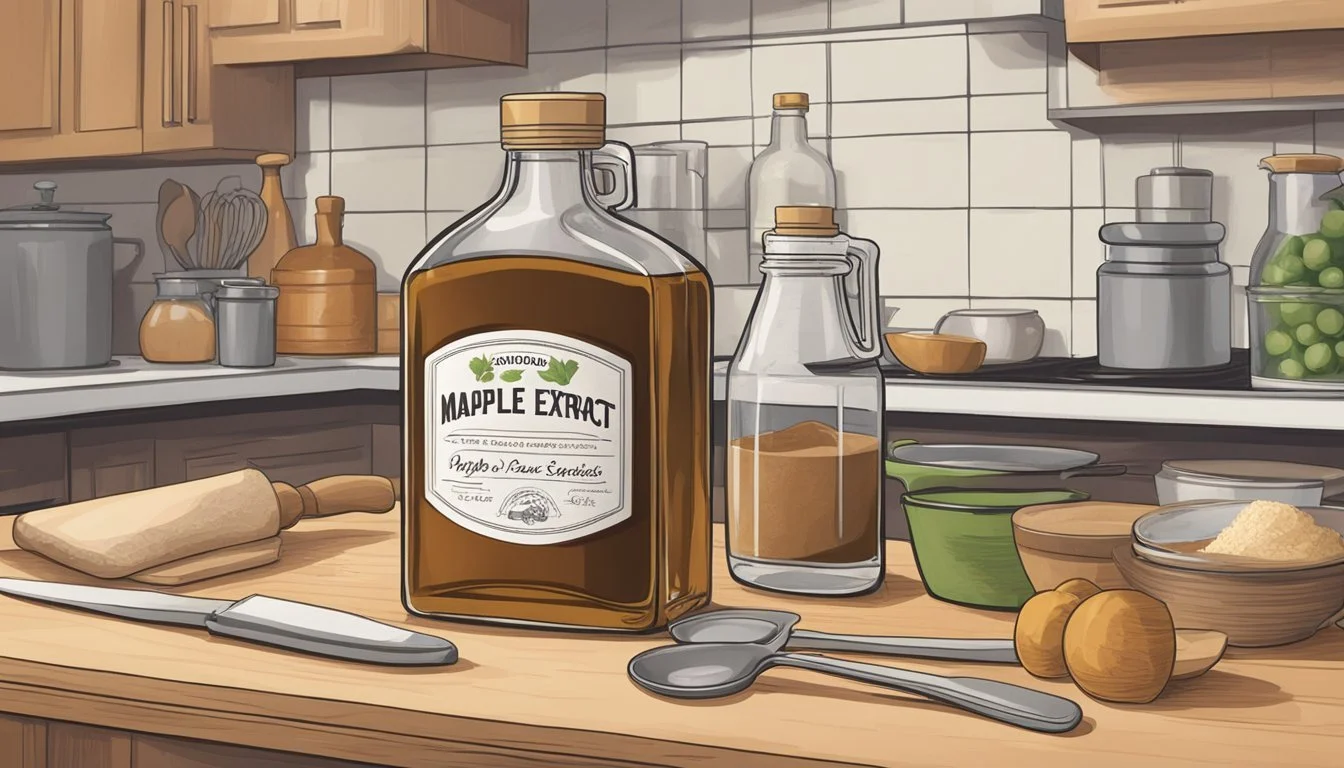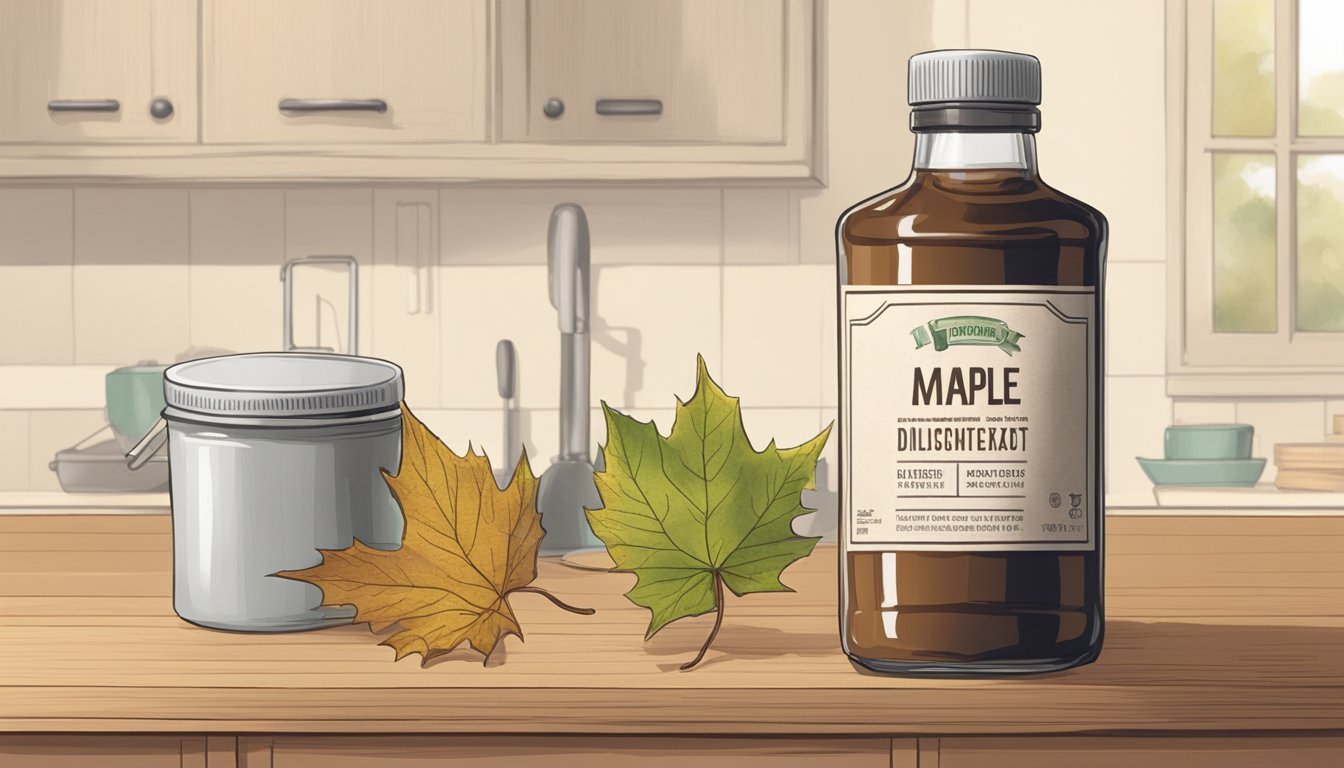Does Maple Extract Go Bad?
Shelf Life and Storage Tips
When it comes to cooking and baking, the question often arises: does maple extract go bad? Understanding the shelf life and proper storage of this flavoring can make a significant difference in your culinary creations. Properly stored, maple extract can generally maintain its best quality for about 3 to 4 years. If stored in a cool, dark place and kept in an airtight container, its longevity can be further extended.
Maple extract is a common ingredient in both professional and home kitchens, known for its ability to impart a rich, sweet flavor to a variety of dishes. However, like many other extracts, it can lose potency over time if not stored correctly. While some sources suggest that unopened maple extract can last for up to 2 to 3 years, opened bottles should always be handled with care to maximize their lifespan.
Moreover, the risk of spoilage does exist, albeit rare. If you notice any off smells or changes in taste, it is best to discard the extract to avoid any potential food safety issues. Keeping these storage tips in mind will ensure that your maple extract remains a valuable part of your pantry for as long as possible.
Understanding Maple Extract
Maple extract is a popular ingredient used for adding a distinct maple flavor to various recipes. It differs significantly from maple syrup in its composition and usage, often containing alcohol to preserve its flavor.
What Is Maple Extract?
Maple extract is a concentrated flavoring derived from real or imitation maple sources. It is primarily used to impart a rich, maple flavor in baking and cooking.
Ingredients: It typically includes alcohol, water, and either natural or artificial maple flavoring. Natural maple extract is made from authentic maple sap, while imitation varieties may use synthetic compounds to mimic the sweet, robust flavor of maple.
Usage: Commonly used in small amounts due to its potency, it enhances the taste of cakes, cookies, and sauces without the added bulk or sweetness of syrup. Its concentrated nature ensures that just a teaspoon can make a significant difference in a recipe.
Maple Extract vs. Maple Syrup
The primary difference between maple extract and maple syrup lies in their composition and use.
Composition: Maple extract is concentrated and often contains alcohol as a preservative, whereas maple syrup is a thick, sugary liquid made from boiled sap of maple trees.
Flavor and Sweetness: Maple extract offers a strong, pure maple flavor without added sweetness, while maple syrup provides both flavor and sweetness due to its high sugar content.
Applications: While maple syrup is commonly used as a topping for pancakes, waffles, and desserts, maple extract is favored for baking and making confections, where a concentrated maple flavor is desired without the additional liquid or sugar.
Storage: Maple extract has a longer shelf life compared to syrup because of its alcohol content, which acts as a preservative.
The Role of Alcohol in Maple Extract
Alcohol's role in maple extract is crucial for several reasons.
Preservation: Alcohol helps extend the shelf life of the extract, preventing microbial growth and spoilage. This allows the extract to remain potent for several years if stored properly.
Flavor Extraction: In the production of maple extract, alcohol acts as a solvent, efficiently extracting the essential oils and flavors from the maple sources. This results in a robust flavor concentration that is not achievable with water alone.
Stability: Alcohol ensures that the maple flavor remains stable over time, maintaining its potency and quality even after prolonged storage.
Types of Alcohol Used: Typically, vodka or rum is used in the preparation of homemade maple extract, chosen for their neutral taste, which doesn't interfere with the maple flavor.
In summary, alcohol is more than just a preservative in maple extract; it is a key ingredient that contributes to the extract's efficiency and longevity.
Storage Guidelines
Proper storage of maple extract ensures it retains its flavor and quality for the longest possible time. Factors such as storage location, temperature, and type of container play critical roles.
Proper Storage Conditions
Maple extract should be kept in a cool, dry place, away from direct sunlight and heat. Temperatures between 50°F and 70°F (10°C to 21°C) are ideal.
A pantry or a kitchen cabinet can be suitable locations. The key is to avoid areas near the stove or any heat-producing appliances. Proper storage prevents evaporation and degradation of the extract.
The Effect of Temperature and Light
Excessive heat and direct sunlight can significantly decrease the quality of maple extract. High temperatures accelerate the breakdown of its compounds, leading to flavor loss.
Prolonged exposure to light, especially sunlight, can degrade the quality as well. Therefore, storing maple extract in a cool, dark place is crucial to maintaining its integrity for a longer period.
Avoid placing it near windows or under direct lighting.
Refrigeration vs. Pantry Storage
Refrigeration of maple extract is not necessary and might not provide any significant benefit over pantry storage. In most cases, keeping it at room temperature in a dry, cool, and dark place is adequate.
Refrigerators can introduce moisture, which might affect the extract if not tightly sealed. Pantry storage is often preferred, but ensure the temperature remains consistent.
The Importance of Airtight Containers
Using airtight containers is essential for preserving the freshness of maple extract. Glass containers with tight lids are recommended as they do not interact with the extract.
Plastic containers can be used but ensure they are food-grade and seal properly. The airtight nature of the container helps avoid contamination and moisture ingress, protecting the extract’s quality over time.
Keep the lid tightly sealed when not in use to extend its shelf life.
Shelf Life Insights
Maple extract, when stored properly, can maintain its quality over time, but various factors determine its longevity. Both unopened and opened bottles have different shelf life expectations. Recognizing signs of deterioration ensures you use the extract before it spoils.
Determining Expiration and Best-By Dates
Unopened maple extract typically lasts 2 to 3 years if stored in a cool, dry place away from direct sunlight. Storage conditions are crucial for preserving its quality.
Opened bottles of maple extract have a reduced shelf life. They should be stored in an airtight container, kept in a cool, dark place, and are most likely to retain peak quality for up to 1 year.
Manufacturers often provide best-by dates, helping consumers gauge the optimal use period. While extracts may not spoil immediately after these dates, their quality, color, and flavor may deteriorate.
Signs of Deterioration
Identifying whether maple extract has gone bad involves inspecting its color, odor, and overall appearance. If the color appears significantly darker or cloudy, it may indicate spoilage.
A sniff test helps determine freshness. An off or rancid odor suggests that the extract has expired.
Decreased flavor intensity is another sign. While the extract may not be harmful, its degraded quality means it won't deliver the desired taste in recipes.
Spoilage signs should prompt disposal to ensure safety and optimal culinary results.
Identifying Spoilage
To determine if maple extract has gone bad, focus on visual and olfactory indicators, the effects of mold and contamination, and specific changes in taste and consistency that occur during spoilage.
Visual and Olfactory Indicators
Mold growth is a primary visual indicator. Look for any fuzzy spots or discoloration.
Also, inspect the container for sediment or crystallization which may indicate degradation.
Olfactory cues are equally crucial. Fresh maple extract has a distinct, pleasant aroma. If it smells off, sour, or otherwise unusual, it should be discarded.
Regularly checking these factors helps in catching spoilage early.
The Effects of Mold and Contamination
Mold indicates contamination, often caused by exposure to air or improper storage temperatures.
Contaminated maple extract may also harbor bacteria, posing health risks if consumed.
Aside from mold, consider contamination by observing if the texture changes— becoming thicker or separating, for example.
Contaminants can alter the extract's flavor, making it taste off. Always store maple extract in an airtight container to minimize contamination.
What Happens When Maple Extract Spoils?
Spoiled maple extract exhibits noticeable changes in taste and consistency. It may develop an unpleasant, sour, or bitter flavor.
Texture may become uneven, with signs of crystallization or sediment formation visible.
Spoiled extract often loses its initial smoothness, appearing clumpy or grainy. These changes result in an unusable product that should be discarded to avoid adverse health effects. Proper storage in cool, dark places prolongs its shelf life and quality.
Usage and Substitution
Maple extract brings a unique maple flavor to a variety of dishes, but substitutes exist if you don't have it on hand. The following subsections will cover how to effectively use maple extract in different recipes and explore viable alternatives.
Incorporating Maple Extract in Recipes
Maple extract adds depth to baked goods, enhancing cookies, cakes, and muffins. A few drops can elevate waffles, pancakes, or even oatmeal. It is also useful in sauces for savory dishes like glazed ham or roast vegetables.
In dessert recipes, such as ice cream or cheesecake, it introduces a rich, distinctive flavor. Cocktails benefit from its hint of sweetness, making drinks like maple bourbon or maple martinis more intriguing.
Substitutes for Maple Extract
When maple extract is unavailable, several substitutes can mimic its flavor. Maple syrup is a common substitute, although its flavor is less concentrated. Imitation maple flavoring is another alternative but may contain artificial ingredients.
Maple sugar, maple honey, or maple butter can also be used, providing a similar but varied intensity of maple taste. As for different flavor profiles, vanilla extract, almond extract, butterscotch extract, and rum extract can offer a flavor twist while maintaining the essence of sweetness in the recipe.
Each substitute has unique properties, so consider the texture and sweetness of the dish when making a substitution choice.
Maintenance and Longevity
Ensuring the longevity of maple extract requires proper storage techniques and a keen eye for signs of spoilage.
How To Extend the Shelf Life
Maple extract should be stored in a cool, dark place to maintain its best quality. Keeping it away from direct sunlight and any sources of heat will prevent degradation.
A tightly sealed container is crucial. Exposing the extract to air can lead to evaporation and compromise its flavor. Ideally, the original packaging should be used, but any airtight container will suffice.
Some find freezing useful for extending the shelf life. While it's not necessary, storing maple extract in the freezer can help maintain its potency for an extended period. Ensure the container is well-sealed to avoid condensation when thawing.
Most maple extracts come with a best-by date, typically ranging from 2 to 4 years. Adhering to this date is advisable, but the flavor can often last beyond this timeframe under optimal storage conditions.
When To Discard Maple Extract
Despite best efforts, maple extract can go bad. Signs of spoilage include changes in color, texture, or aroma. If it smells off or has an unusual taste, it's time to discard it.
Look for any mold growth. The presence of mold indicates contamination, which can occur if the extract is exposed to moisture or not stored properly.
Even if no visible signs are present, if the extract has been open for several years, it might start losing its flavor. A diminished flavor profile is often a good indicator that it's past its prime.
Being cautious and regularly checking the condition of the maple extract ensures that it remains safe and flavorful for as long as possible.





